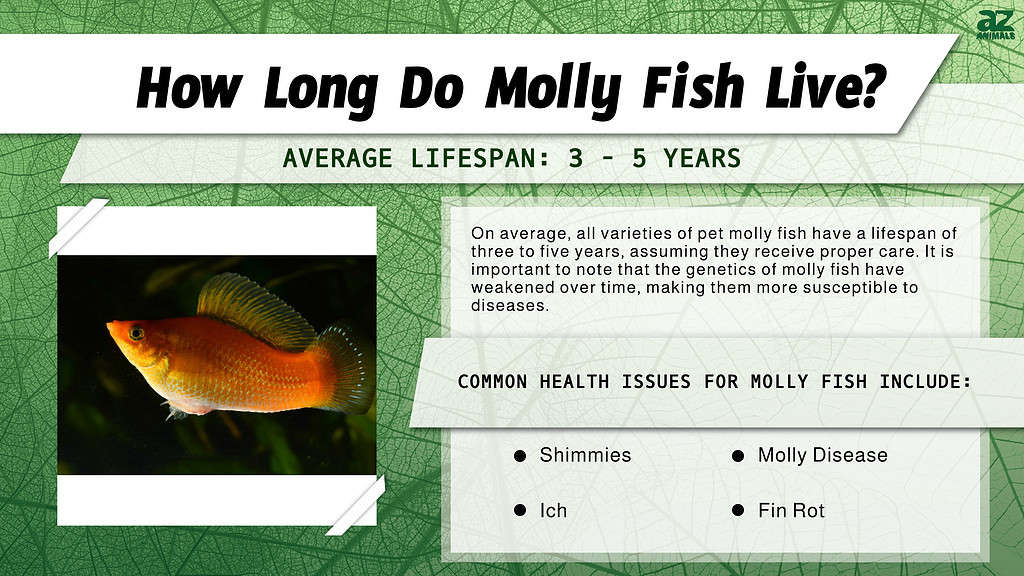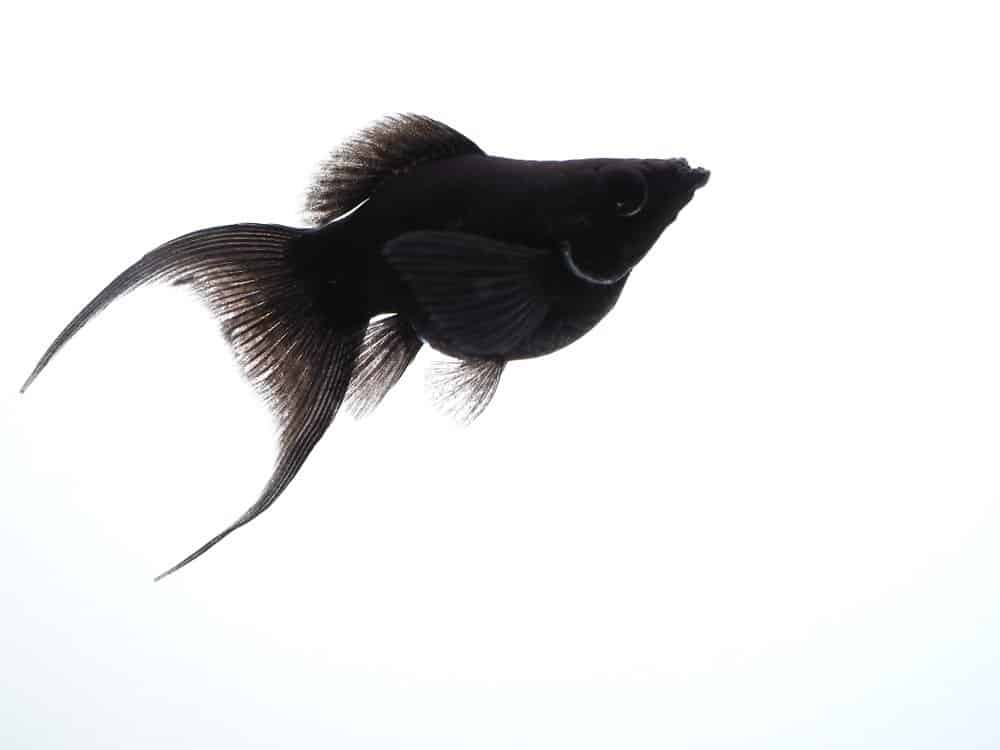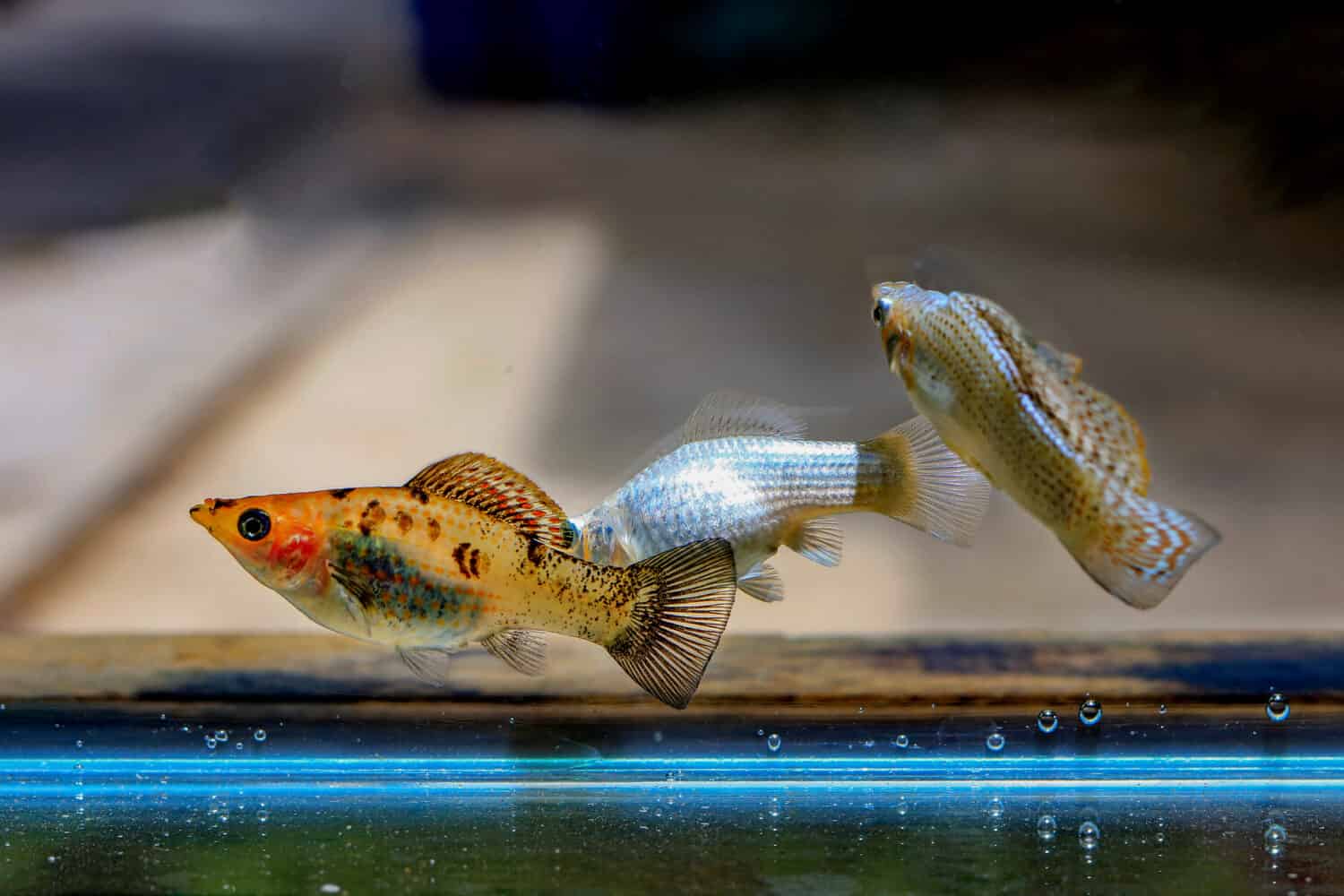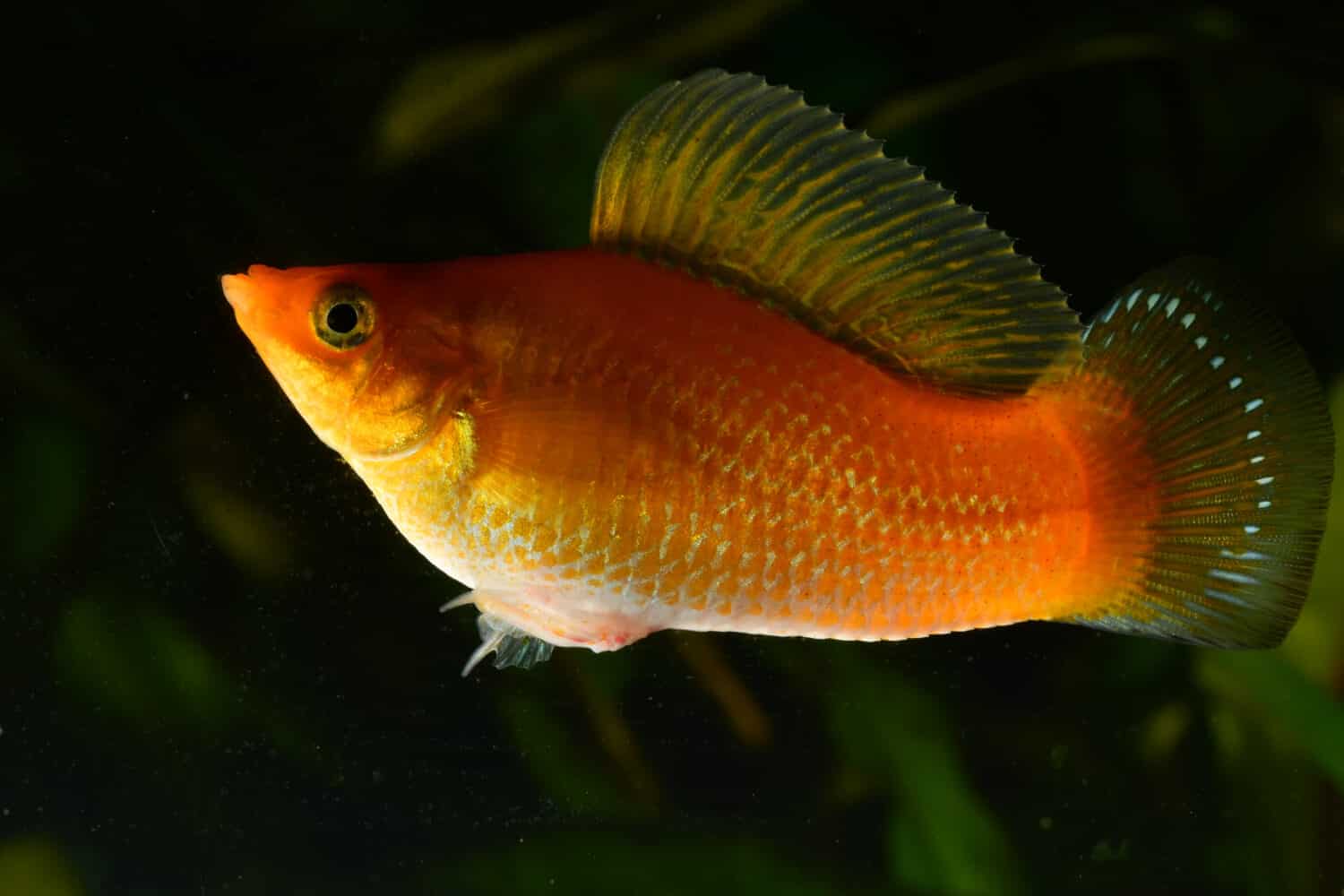
Mollies are a type of live-bearing fish that adds color and life to many tropical aquariums. They are commonly kept as pets and thrive in a variety of different tank setups with various compatible tank mates.
Although many people think mollies are short-lived fish, the truth is that these fish can live for several years. It all depends on how well they are cared for. They don’t live as long as koi or goldfish. But they are capable of living as long as pets like hamsters or gerbils.
This article gives detailed information on molly fish, along with ways you can extend their lifespan.

Mollies can be found in places like Mexico and the Southern United States, where their habitat consists of mangroves, lagoons, and rivers.
©Palomasius/Shutterstock.com
About Molly Fish
Mollies (Poecilia) are live-bearing fish that reside in Central America where they inhabit both freshwater and brackish water. They live in places like Mexico and the Southern United States. Their habitat consists of mangroves, lagoons, brackish ditches, streams, and rivers.
Three main species of molly fish are commonly kept as pets: P. latipinna, P. sphenops, and P. velifera. Many people keep mollies as pets in home aquariums. They can be kept in medium to large-sized tanks with a heater, filter, and plenty of plants.
Mollies are appealing to many fish keepers for their hardy nature, adaptability, and peaceful temperament. Most molly fish will only grow to 3.5 to 5 inches in size.
Mollies can be found in various colors, species, fin types, and shapes. The balloon molly is a fascinating variety, with a rounded stomach and a more compressed appearance. Sailfin mollies have noticeably larger dorsal fins, while the more common short-finned molly has standard-sized fins. The endless colors and patterns of molly fish are one of the many reasons fish keepers are drawn to them.
The Average Molly Fish Lifespan

There are certain factors that can affect how long a molly fish lives.
©Mr.Sutun photographer/Shutterstock.com
All pet molly fish, regardless of their variety, only live for three to five years on average. This estimate assumes the right care. However, the molly fish’s genetics has grown weaker and more prone to developing disease. This is due to poor breeding habitats in captivity. As a result, many molly fishes aren’t living as long as they can in captivity.
There are certain factors that can affect how long molly fish live. Many beginner fishkeeper mistakes can shorten their lifespan to a few months to a year. It is more common for them to die from disease or poor water quality rather than old age in aquariums.
The Molly Fish Life Cycle Explained
The molly’s life cycle is fascinating because they are live-bearing fish, meaning they give birth. This means that instead of starting out their life from an egg, mollies are birthed by their mother.
Let’s take a look at this fascinating fish’s life cycle below.
Conception
As live bearers, mollies do not lay eggs but rather give birth to live young. They are ready to breed at four to six months of age and reproduce by internal fertilization. Mollies are ovoviviparous and female mollies will carry their eggs in their body after fertilization by a male.
Pregnancy
A female molly fish will be pregnant for approximately 52 to 60 days before giving live birth. You will notice her stomach protruding gradually over this period. When a female molly is close to giving birth, her stomach will suddenly increase in size and have a squared appearance.
Fry
The pregnant molly will look for a safe and dark part of the aquarium to give birth to 30 to 80 fry (newborn mollies) at a time. These fry will be tiny and difficult to spot at less than half an inch in size. The parent mollies do not care for their young and will eat them if given the chance.
Juveniles
At around two months of age, mollies are juveniles. They will have increased in size and started to show patterns and colors that will become more vivid as they mature.
Adults
Adult mollies are around six to eight months of age and will have developed their colors and patterns. They can live for the next several years with a lifespan of three to five years. At around three to four years of age, many mollies are nearing the end of their lifespan.

Mollies should be kept in freshwater tanks, and not in marine aquariums.
©MichalNowaktv/Shutterstock.com
How To Increase Your Molly Fishes Lifespan
You can enhance their lifespan by ensuring you care for them properly, in the following ways:
- Ensure they are in a fully cycled aquarium that has undergone the nitrogen cycle for three to six weeks before placing any live fish inside. High levels of ammonia and nitrite in an uncycled aquarium is the top killer of new molly fish.
- Keep mollies in small groups of at least five fish, since they are social and feel less stressed when kept with other mollies.
- Ensure their tank is large enough so that each molly has room to swim comfortably. A good starting size for a small group of mollies is around 20 gallons.
- The tank should have a filter to maintain good water quality and a heater to keep the temperature stable. A heater is a must-have for molly fish aquariums because they are tropical fish.
- Mollies need freshwater tanks and not marine aquariums. Although they can tolerate more salt in their environment than other freshwater fish, too much salt can kill them.
- Feed your molly fish a balanced and species-appropriate omnivorous diet of pellets and supplements to keep them healthy.
The photo featured at the top of this post is © Mr.Sutun photographer/Shutterstock.com
Thank you for reading! Have some feedback for us? Contact the AZ Animals editorial team.







